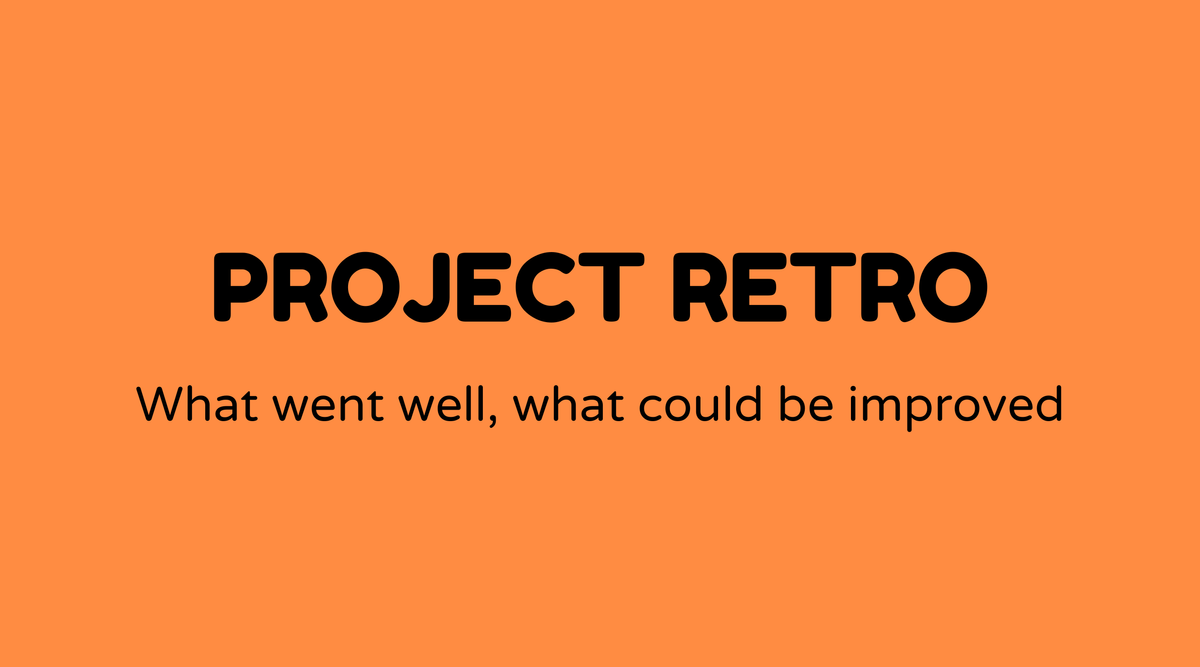Project retrospective (retro)

Overview of Project Retrospective (Retro):
A project retrospective, commonly referred to as a retro, is an important phase in the project management process. It involves the project team gathering to reflect on completed iterations or stages of a project. The primary focus is to identify what was effective and what fell short, enabling improvements for upcoming projects. As a core element of ongoing enhancement, retros offer a structured approach to capitalize on successes and learn from setbacks.
Why Project Retrospective Matters:
Why should project retrospectives matter to you? For one, they serve as a foundation for nurturing a learning culture within teams. Retrospectives help maintain accountability, encourage openness, and develop an agile atmosphere. They provide an avenue for team members to express their viewpoints, contributing to better team unity and, ultimately, more successful outcomes.
Organizations recognized for their high performance, such as Spotify and Google, conduct retros consistently. Insights derived from retrospectives regularly stimulate innovation and efficiency, making them essential in today’s evolving project environments.
What is a Project Retrospective:
A project retrospective is a structured meeting held after a project iteration or phase. During this session, team members examine the project's actions and results by considering three central questions:
- What went well?
- What didn’t go as intended?
- What could we do differently next time?
The objective is to analyze the process constructively without assigning blame. At times, analogous methods like the "Start, Stop, Continue" exercise or the "Four L's" (Liked, Learned, Lacked, Longed for) framework can be utilized to guide the dialogue.
How to Conduct a Project Retrospective:
Executing a successful retrospective involves several thoughtful steps:
-
Preparation:
- Choose a facilitator—typically the Scrum Master or project manager.
- Collect relevant data using tools such as performance metrics, feedback forms, or online polls.
-
Establish the Environment:
- Foster an open and secure atmosphere for participants.
- Set clear objectives using a Project Retrospective Agenda.
-
Collect Data:
- Employ collaborative platforms like Miro or Trello to compile information.
- Encourage diverse team members to share their insights.
-
Generate Insights:
- Organize feedback into themes or categories.
- Use techniques like "5 Whys" to investigate root causes.
-
Decide on Actions:
- Prioritize actionable insights.
- Assign responsibilities and timelines for future project improvements.
-
Conclude the Retrospective:
- Summarize key takeaways and decisions.
- Thank participants for their honesty and contributions.
Sample Agenda for a Project Retrospective:
A typical agenda might include:
- Introduction: 5 minutes (Welcome and purpose setting)
- Setting the Stage: 10 minutes (Ground rules and check-in)
- Gathering Data: 20 minutes (What went well? What didn’t?)
- Generating Insights: 20 minutes (Why did things happen?)
- Deciding on Actions: 15 minutes (Prioritize what to enhance)
- Closing: 5 minutes (Wrap up and appreciation)
Examples of Project Retrospectives:
-
Video Game Development: Retros are conducted after each Sprint to rapidly adjust to new game features and player feedback.
-
Software Engineering Teams: After every software release, a review occurs to determine how the deployment process can be improved.
-
Product Design Firms: Teams hold retrospectives to assess design iterations and client feedback, ensuring the project aligns with client expectations throughout its course.
FAQs
How often should project retrospectives take place?
- This varies based on the project's scale. Agile teams typically hold retros after every sprint. For larger projects, retros at each significant milestone or phase are effective.
What distinguishes a retrospective from a post-mortem?
- A retrospective happens at the conclusion of an iteration, while a post-mortem takes place at the end of a project. Retros focus on next steps, whereas post-mortems analyze the overall project lifecycle.
What tools facilitate an effective retrospective?
- Platforms like Miro, Trello, or Google Forms serve well for conducting online retrospectives. They promote collaboration and enable effective data organization.
Who should take part in a project retrospective?
- Anyone involved in the project should participate, including project managers, team members, and stakeholders when suitable. It's a collaborative effort.
Can retrospectives be applied outside software development?
- Certainly! They are beneficial in any project management context, such as marketing campaigns, product launches, and event planning.
Where can I find additional resources on project retrospectives?
- Explore the Agile Alliance's website or watch helpful videos on YouTube to learn more about retrospective methodologies.



